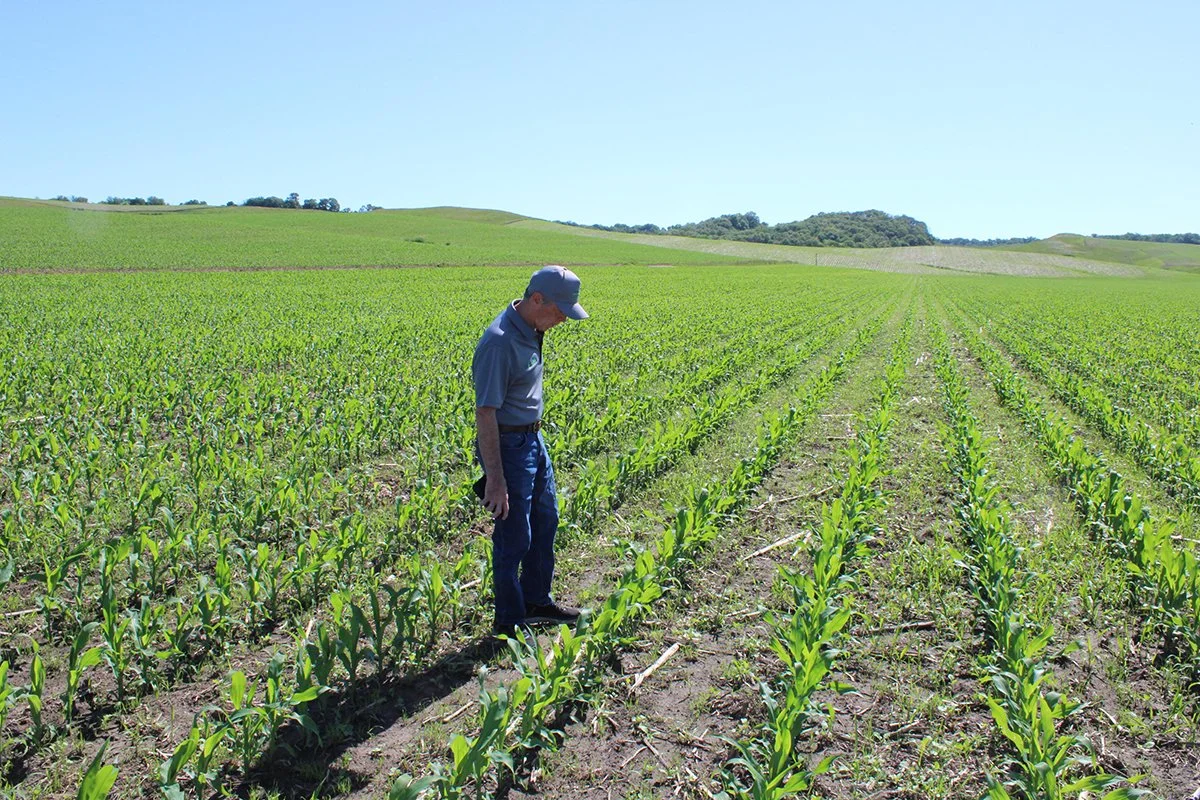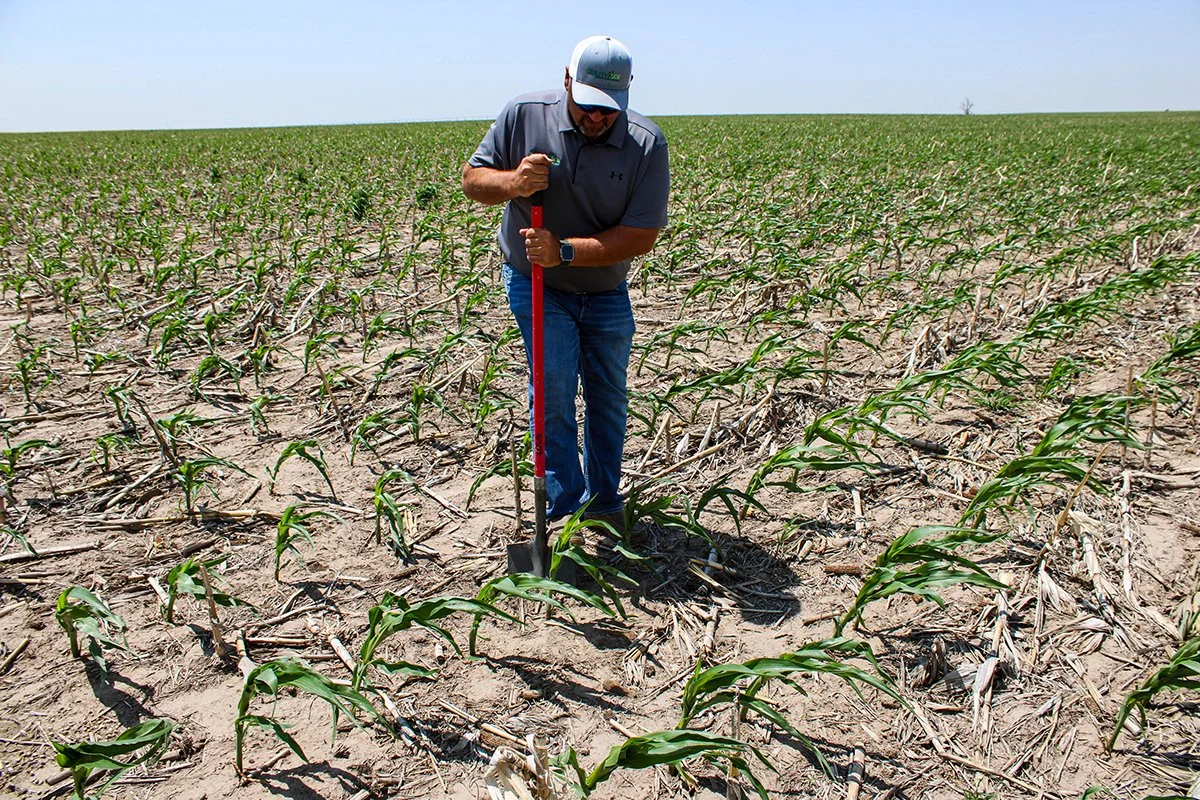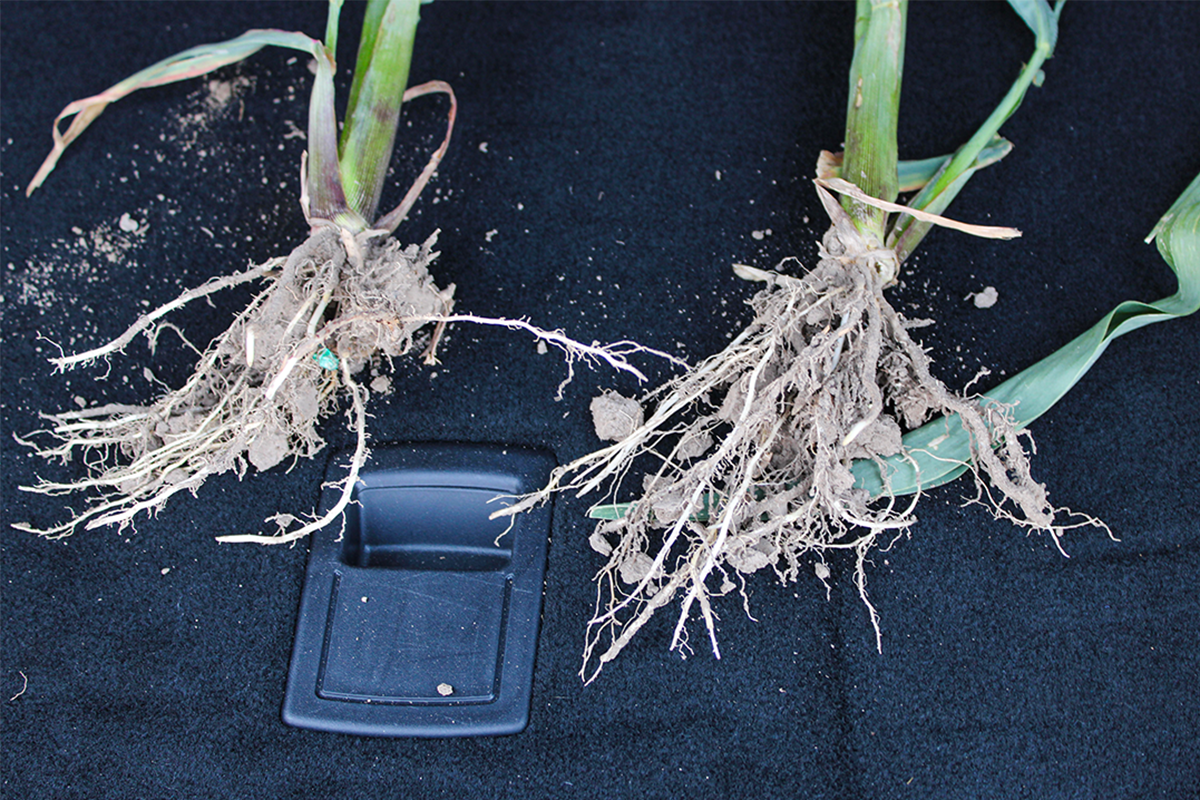2024: Impact of Liquid Phosphate Fertilizers in No-Till Farming
June marks that time of year when there are once again crops to scout in the Midwest. Although this season has been a bit tumultuous, with rain delaying planting in much of the Midwest (in reality, every season is tumultuous, and you'd be hard-pressed to find a stress-free planting year), the corn crop is in excellent condition. In fact, USDA crop early season condition is rated as excellent in much of the Midwest, linked here: USDA Crop Progress & Condition.
An excellent crop outlook is fantastic news, as CultivAce once again, just like in our 2023 phosphate fertilizer trials, has several plots across the Midwest and Plains states. I had the opportunity to scout fertilizer plots with our representative for the North Central States, Chuck Peppel, and our representative for the Midwest, Chad Calhoun. These plot scouting trips took me first to Independence, Wisconsin, then down to Gem, Kansas.
An Abnormally Warm Wisconsin
Starting in Wisconsin, I met Chuck Peppel and the grower early in the morning to beat the unseasonably warm weather. This year marks the second year for this grower, using CultivAce Free Phos 24, liquid phosphate phosphate. The grower treated 200 acres of his farm this year with Free Phos 8-24-0, while using his standard practice, 6-24-6 on all other acres. We learned from the grower that he alternated passes with 3 gallons of Free Phos 24, applied in-furrow, and 5 gallons of 6-24-6 in-furrow. We all piled into my pickup and started down the road to arrive at one of the fields featuring our product, Free Phos 24.
Chuck Peppel, North Central Sales - Email | (218) 329-4182
It was immediately apparent that this grower's no-till practices were helping keep moisture in the field, and the crop was visually benefiting, displaying a prime example of the benefits of no-till corn in Wisconsin. Chuck inspected the field and then went into the standard practice pass. His shovel struck rich dark dirt and unearthed a corn plant. Earthworms squirmed throughout the upturned dirt.
He strode into the Free Phos 24 pass and repeated the practice, excavating more earthworms in the process. His face lit up when we compared the root digs. Barely hiding his excitement, he exclaimed,
"After all my years in agriculture, you know something is special if it gets me fired up like this."
We dug an additional Free Phos 24 plant to confirm it wasn't a fluke…It wasn't.
Chuck, the grower, and I all agreed there was a substantial difference, as shown in the photo, with the Free Phos 24 presenting more root biomass. The photo illustrates what we saw. On the left is 5 gallons of 6-24-6. The two plants beside it are 3 gallons of Free Phos 8-24-0 liquid phosphate fertilizer.
Left: 5 gal - 6-24-6 | Middle & Right: 3 gal - Free Phos 8-24-0
Windy Western Kansas
Chad Calhoun, Midwestern Sales, Email | (319) 931-2054
Next, I flew into Denver, Colorado, and drove 3 hours to Gem, Kansas which was an old shipping point on the Chicago, Rock Island and Pacific Railroad dating back to the late 1800’s. I was there to meet with our Midwest Rep, Chad Calhoun, and another grower into his second year of working with CultivAce products.
As we made our way into the field, we were battered by 30 mph winds, whipping up dust in our faces and threatening to knock our hats off our heads. Those familiar with the area know this is not out of place on the plains of Kansas. This dryland cornfield was planted using two different in-furrow liquid phosphate fertilizers. Three gallons of Free Phos 24 went up against 3 gallons of Riser.
After a look at the field map, Chad went to work digging out a plant from each practice. Even though the heat was baking the ground (the week we were visiting recorded multiple mid-90s days), it soon became apparent that this field was a perfect example of Kansas no-till farming. His shovel pierced a dry layer of crust, but before long, it reached damp earth. The previous year's corn stubble did a fantastic job keeping moisture around the root zone. After gathering plants from each practice, Free Phos 24 liquid phosphate fertilizer proved triumphant.
"That's what I like to see," Chad said as we laid out the plants. Again, all three parties involved admitted that the Free Phos 24 treated corn plant displayed more root biomass. The Free Phos 24 plant greedily clung to the dirt it was pulled from, while the same could not be said about the plant treated with Riser. The photo below gives the reader the same vantage we had. The left plant was treated with 3 gallons of Riser, and the right was treated with 3 gallons of Free Phos.
Left: 3 gal - Riser | Right: 3 gal - Free Phos 8-24-0
While root digs aren't an exact science, and the only definitive way to interpret yield is through the yield monitor, more rooting means more root-soil contact for nutrient mining. These plots seem primed for success, and we certainly look forward to keeping an eye on them throughout the rest of the season, which brings me to an important point.
Subscribing to our newsletter is the easiest way to stay up-to-date with all things CultivAce. As we continue our quest to prove our products through trial results, you get the data, updates and agronomic tips we’re seeing in the field, all-season long. Subscribe now, and never miss an article, blog, or update.
Why Free Phos 24
Throughout our trials, we continue to showcase that Free Phos 24 stands out as the superior liquid phosphate fertilizer due to its highly efficient nutrient delivery system. As designed, it ensures rapid availability of phosphorus, promoting robust root development and enhancing overall plant health.
By providing a balanced formulation that maximizes nutrient uptake, with both a biological component, and carbon source, this results in a stronger and more resilient crop. This unique composition supports better moisture retention and soil structure, making it ideal for various farming practices, including no-till farming. With consistent results across different soil types and conditions, Free Phos 24 helps farmers achieve higher yields and improved crop quality.
If you have more interest in the impact of rooting on early corn development, I would highly encourage you to visit this article by Bob Nielsen, formerly of Purdue University: Impact of Rooting on Corn Development.






